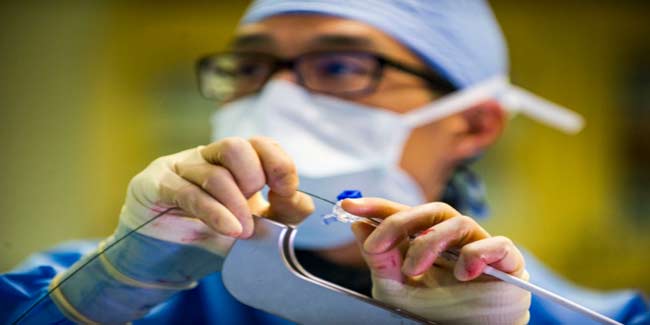
A hemorrhagic stroke is bleeding (hemorrhage) that suddenly interferes with the brain's function. This bleeding can occur either within the brain or between the brain and the skull.

Treatment
When a large haemorrhage occurs in or around the brain, the entire brain is in danger because of increasing pressure within the skull. Much of the emergency treatment for hemorrhagic stroke involves measuring and lowering pressure. A mechanical ventilator frequently is used to hyperventilate the stroke patient because this can lead to a lower, safer pressure. The sugar mannitol, which sometimes is used as a medicine, pulls brain fluid into the bloodstream, also lowering intracranial pressure. If necessary, a surgeon will cut the skull bone to decrease the compression of the brain tissue. In some cases, surgery is necessary to remove a large portion of the clot after a hemorrhage, but in most patients, the body eventually reabsorbs the clotted blood on its own.
In the hours after a hemorrhagic stroke, high blood pressure must be lowered gradually to safe levels. Doctors consider the amount of brain swelling present when they decide what level is most appropriate.
Surgery
If bleeding occurred because of an abnormally formed blood vessel, surgery may be appropriate to prevent a hemorrhage from happening again. An aneurysm can be repaired by placing a surgical clip. Depending upon the size and location of an arteriovenous malformation, a neurosurgeon may be able to repair or remove an arteriovenous malformation.
Early intervention by an occupational therapist and physical therapist is helpful. These professionals can teach people how to work around a new disability and regain strength after brain injury. Commonly, hospitalization is followed by a period of rliving in a rehabilitation center, where additional intensive therapy may be provided. The goal of rehabilitation is to help the patient recover as much physical and speaking function as possible.
Follow up
Many doctors prescribe anti-seizure medication as a protective measure. This medicine may be continued for six months or more following the stroke. In the case of subarachnoid hemorrhage, which commonly provokes spasms of the arteries nearest to the site of bleeding, medicines may be used to prevent arteries from narrowing when they spasm.
How we keep this article up to date:
We work with experts and keep a close eye on the latest in health and wellness. Whenever there is a new research or helpful information, we update our articles with accurate and useful advice.
Current Version
